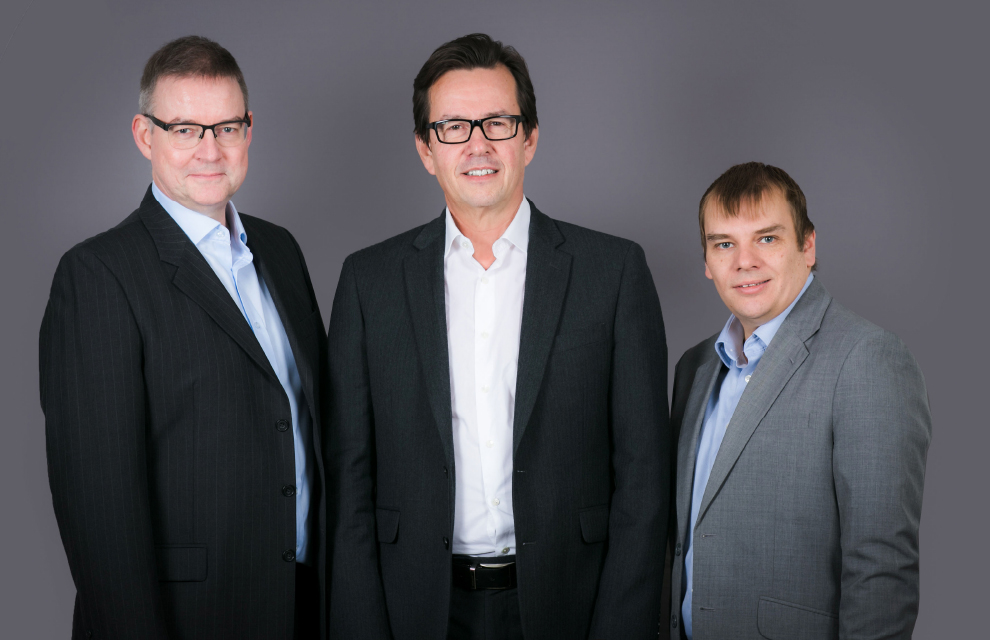Hudson Fintech
Hudson Fintech co-founder Troy Peterson speaks about revolutionising the “stagnant financial software market” with an advanced system architecture that meets the industry’s need for a light-touch technology solution
Tell us about the origins of Hudson Fintech?
The origins of Hudson really started shortly after I began my first development role in banking. Very early on I was tasked with adding support for equities to a legacy repo system and as a junior developer at the time I was astonished by the decisions that were being made about the architecture. The key directive was to make it work while changing as little as possible. This involved re-using existing fields that didn’t apply, such as re-using a field called ‘coupon’ to store a price.
I quickly learned that big production systems are fragile and suffer from a lot of entropy and in with the traditional design of those systems the lowest risk approach is usually the one that involves the fewest changes. This creates the compounding problem of a software design that is completely divergent from reality of its implementation.
The simplest of requests from the business for small changes thus require massive amounts of analysis in order to determine the minimal change that could be made to just get it working and proper engineering practices are utterly impossible in this environment. I faced years of frustration with having to explain to traders why they couldn’t price a certain instrument or handle a certain trade with a client because it would take weeks of development for a simple change.
This fundamental design issue is a problem that I always wanted to solve, but I was at a loss how to go about it until I came across the entity-component-system (ECS) architecture a number of years later. Although it’s used almost exclusively in video games I immediately saw potential for it to enable the dynamisms that I thought trading systems should have. As I started to play with the idea and create prototypes. I also talked to people in my circle of contacts about the idea.
I had worked with Dietmar Nowatschek (now Hudson Fintech’s product owner) in the past, and when I spoke with him about the idea it immediately resonated. He, like many that we’ve spoken to, had lived with the same pain points for years and could suddenly see a new way of doing things. Dietmar put me in contact with Michael Walliss (now Hudson’s CEO) who knows about starting and running successful businesses and after a few roundtable discussions we agreed to form Hudson and make it happen.
Tell us about the Hudson platform and the ECS architecture, what is different about this to other systems?
The ECS architecture is a design philosophy that is widely adopted in video games. In the world of games ECS is not the only approach, but it is by far the most common because it presents a set of guidelines that allow for very quick, iterative development and separation of concerns. What this means is that the graphics experts can work on the graphics subsystem and the AI experts can work on the AI subsystem and game designers who don’t necessarily know anything about the actual code can bring the pieces together into a complete product. It allows for extensive re-use of assets, so once you’ve written (for example) a bit of code to calculate compound interest, you can use that same logical module anywhere that you need to calculate compound interest.
The core concept is to eliminate the complex hierarchies of objects relationships that are present in traditional systems and instead view everything as just an abstract ‘entity’ with arbitrary data on it. Previously you had to think out the data model ahead of time and then stick with it. even if something has changed, such as a new requirement or a new regulation (the Securities Financing Transactions Regulation, for example) then you would need to change that data model.
In the ECS world, new data can be added or removed from entities at any time and data is always fee to move between entities. We do not designate an entity as being a ‘trade’ or a ‘book’ or a ‘price’. To us it’s just a container of data. We then use pattern matching to classify entities based on their properties and put them into what we call ‘families’ of related entities based on their properties. Thus, an entity can be considered to be many things at once and can evolve at run-time.
In ECS, the ‘system’ is what we call processors that work on handing the data. This is where the business logic is performed. Because the business logic is separate from the data, and because each system is small and independent of other systems, you can test the systems in isolation and have domain experts develop them independently without having to know or understand the data model. This means that the data model is free to change over time and the business logic can evolve independently as new systems (or data) added won’t adversely affect any existing rules in place.
Hudson’s company mission statement says its aim is to revolutionise processes and tackle the “stagnant financial software market”. How?
Software in this industry hasn’t changed much since the 80s. We are constantly seeing new coverings put over aging technology. New releases from the large vendors are supplying user interfaces using Windows Presentation Foundation and other technologies, but the interfaces are identical with no innovation. And on the back-end server side, the code often has not evolved at all since its inception.
Typically, it’s layers and layers of accumulated bolt-on pieces assembled in a behemoth infrastructure. Even brand-new software, written with the best of intentions to do things ‘the right way’ is usually encumbered with the old object-oriented style of design and data modelling that quickly falls apart as soon as someone identifies a new requirement late into development.
Our approach to an agile software ‘engine’ changes this. We can extend, adapt, and evolve the platform seamlessly without risk to existing functionality. The Hudson platform offers high availability and reliability, along with superb performance and fast turnaround time for changes that existing software just isn’t capable of supporting.
Do you see Hudson as being competitive or complementary to the existing industry ecosystem?
As a small upstart vendor we hold no illusions of displacing the whole industry ecosystem overnight. It’s a massive undertaking to support all aspects of just one business line at a large firm. Although we envision Hudson expanding into a single go-to solution across many asset classes and business lines, our hope is to start by integrating with the current ecosystems and add value in those edge cases that others can’t. Hudson excels at trade capture, position management and lifecycle management of lending trades.
The architecture that it’s built on presents immense opportunities to build new standard or bespoke functionality quickly. We’re happy to integrate with any existing solutions for market execution, settlement, static data masters, etc.
There are so many problems out there that we can solve creatively with our solutions that can sit in between and compliment the various other technologies out there. We strongly feel that our ability to fit into these niche areas has the potential to disrupt the whole way of thinking in finance IT.
Why would your system be cheaper or better than many alternatives that might currently exist?
Our platform is an ‘engine’ that drives a trading system. In the same way that a video game engine can be used to build a space simulator, a racing simulator, a puzzle game, or an adventure game on a single engine, we are able to build any sort of trading application on Hudson.
The key is our tools for building screens and workflows without code that allows the business analysts who understand the business to create the workflows themselves by linking together discreet blocks of functionality, called systems.
This means project implementation teams can be smaller and more focused. Overall, the approach is much quicker than traditional development, while providing better testing capabilities to prove the functionality as we progress. The big picture is that as a firm you can put more resources into the business experts that can develop the workflows themselves with much less development effort, resulting in quicker turn-around. Because automated testing is front-and-centre in the process you can have assurance that changes are going to work immediately, and that evolution of the system doesn’t adversely impact existing functionality and flows.
How many clients does Hudson have currently on-boarded? What sort of volumes is the platform managing?
The platform has been in development for a couple of years now. A lot of effort has gone into making sure it’s reliable and resilient and performant to high standards. Thanks to its data-grid distributed cluster infrastructure, Hudson can be scaled almost infinitely. With powerful enough servers we can easily handle millions of historic trades and daily volumes in the hundreds of thousands, not that anyone ever sees those sorts of volumes in securities lending. Now that we have a stable product base that we are confident in and have proven the concept for ourselves we are just in the early stages of presenting it commercially. At this stage we’ve had a number of discussions with potential clients and are in early onboarding talks but we do not have any clients using the system yet. We expect this will change in the very near future.
Does your platform have room to grow into new areas? Can we expect any new features in the near future?
Hudson is a designed to constantly grow and move into new areas. Although designed for trading applications we have received interest from other industries are in talks with a solution provider in a completely different industry to leverage the Hudson platform and engine technology in order to power their own service offerings. Within finance we have the ability to manage massive amounts of data and perform complex analysis and deductive decision making functions. The Hudson platform is the perfect place to build advanced artificial intelligence solutions and our open and flexible data model enables us to handle virtually any type of asset class and trade structure. Outright bond and swaps trading are likely in the future with structures like butterflies and curve trades.


